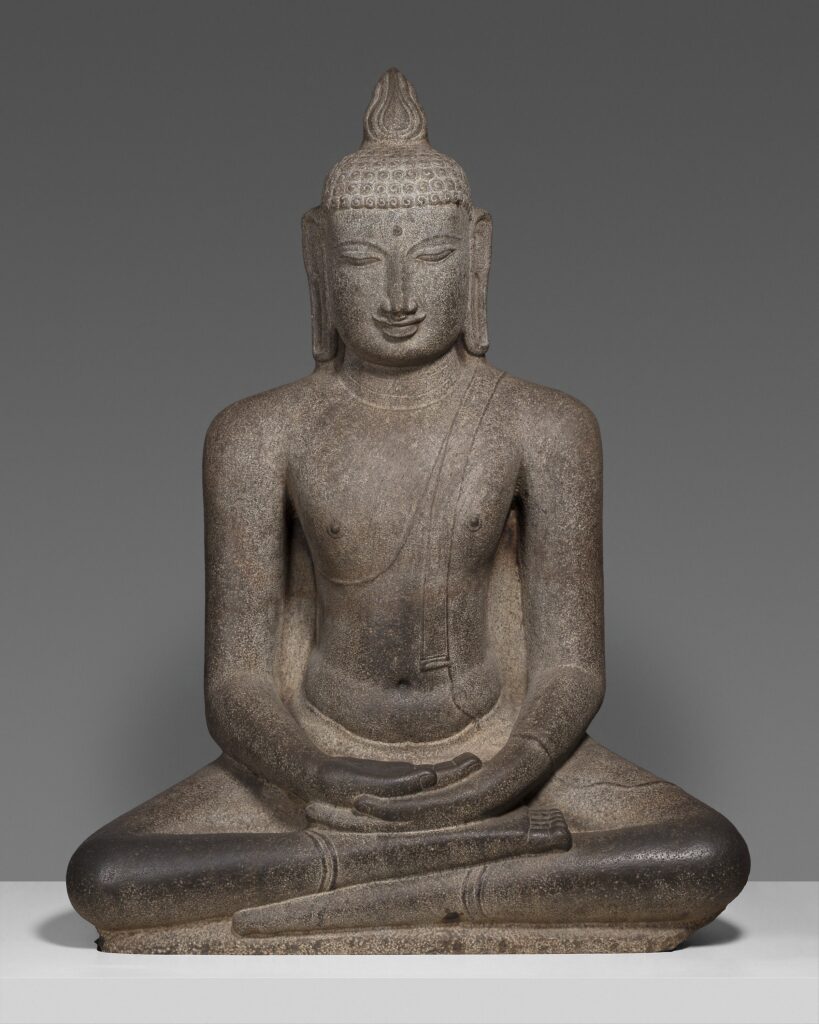Zen practice at the Falaise Verte Zen Centre follows the tradition of the Rinzai school of Japanese Zen Buddhism.
India

The Zen tradition reaches back to the historical Buddha, Siddhārtha Gautama, also called Shākyamuni, who was born in the north-east of India about 2,500 years ago.
Transmission began with Mahākāśyapa, who was followed by twenty-seven Indian arhats.
I have the treasury of the true Dharma eye, the marvelous mind of Nirvana, the subtle dharma gate of the true form of the formless, not based on words and letters, transmitted separately from the teachings, always remember the truth of the Buddha’s teaching, and the greatest principle of common mortals realizing Buddhahood. Now I have entrusted this to Mahākāśyapa.
— Shākyamuni
China

Buddhism became established in China from the 1st century, but it was not until the 5th or 6th century that an Indian or Persian monk, Bodhidharma, the twenty-eighth in line after the historical Buddha, travelled to northern China and introduced a form of Buddhism advocating practice and realising one’s true nature over erudition or following precepts. He is considered as the first patriarch of the dhyāna branch of Buddhism, which became Chinese Chán and then Japanese Zen.
A special transmission outside the scriptures
— Bodhidharma
Not founded upon words and letters;
By pointing directly to [one’s] mind
It lets one see into [one’s own true] nature and [thus] attain Buddhahood.
Chán expanded in China and divided into five schools, one of them being Rinzai (Línjǐ in Chinese), which took the name of its founder in the 9th century, ten generations after Bodhidharma. The style of the Rinzai is deliberately direct and iconoclastic.
I say to you there is no buddha, no dharma, nothing to practise, nothing to enlighten to. Just what are you seeking in the highways and byways? Blind men! You’re putting a head on top of the one you already have.
— Rinzai
Japan

Although the presence of Buddhism in Japan dates from the 6th century, Zen was introduced only at the end of the 12th century. The Rinzai school first spread amongst the aristocracy, in particular amongst samurais, in Kyōto and in Kamakura. It was only at the start of the 18th century that the Zen master Hakuin popularised the Rinzai school throughout Japanese society.
All beings are by nature are Buddhas, as ice by nature is water. Apart from water there is no ice; apart from beings, no Buddhas. How sad that people ignore the near and search the truth afar: like someone in the midst of watercrying out in thirst: like a child of a wealthy home wandering among the poor.
— Hakuin
Today there are fourteen branches of the Japanese Rinzai school. The Falaise Verte Zen Centre belongs to the biggest branch in terms of number of temples: the Myōshin-ji branch. The name comes from its head temple in Kyōto, founded by the Japanese Zen master Kanzan Egen in 1342.